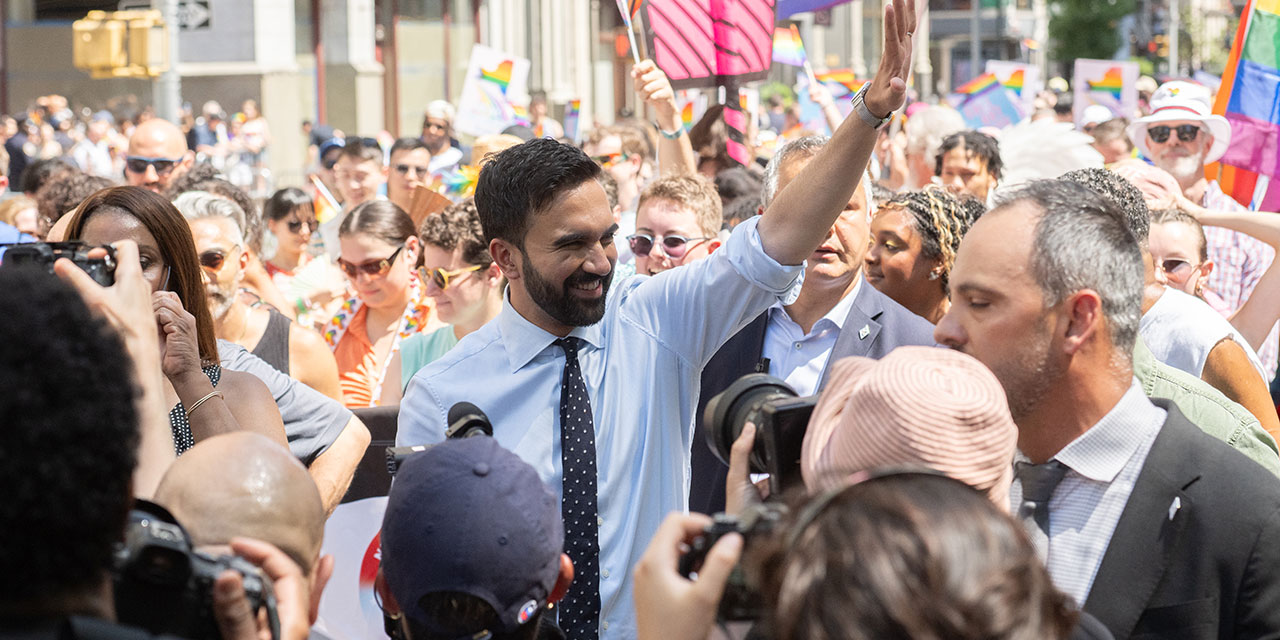
Last week, 33-year-old democratic socialist Zohran Mamdani won New York City’s Democratic mayoral primary, defeating frontrunner Andrew Cuomo in spectacular fashion. For months, polls had predicted an easy victory for the former governor.
Even more surprising than Mamdani’s upset, however, was the role of one demographic group that helped him pull it off: Asian Americans. New York’s Asian Americans, frustrated by progressives’ soft-on-crime policies and attacks on the city’s specialized high schools, had moved rightward over the last few election cycles. Yet, Mamdani managed to win majority-Asian precincts in Gotham by 15 percentage points.
Finally, a reason to check your email.
Sign up for our free newsletter today.
This was no accident. As I recently wrote for City Journal, it became evident to me on June 2, when New York State Senator John Liu endorsed Mamdani, that a central part of Mamdani’s strategy was to appeal directly to the city’s South and East Asian communities to close the gap with Cuomo. That strategy plainly worked—underscoring the growing centrality of Asian voters to the future of both New York and the country.
Before examining just how successful this strategy was, it’s worth reviewing how it was carried out—and what motivated it in the first place.
Let’s start with the impetus. On February 5, Emerson College released its first poll of the Democratic mayoral primary. In that survey, a plurality of Asians (20.8 percent) named Cuomo, who had not yet officially entered the race, as their first choice for mayor. Just 2.6 percent listed Mamdani. By March 26, in Emerson’s second poll, the former governor’s share of the Asian vote had increased to 25.5 percent, while the democratic socialist’s share had risen to 18.6 percent. Two months later, a third Emerson College poll showed that in the last round of ranked-choice voting, the Asian vote split evenly between both candidates.
It’s likely that Mamdani—who has proven himself politically adroit—read these polls and saw a path to the Democratic nomination by expanding his support among Asian voters.
How did he do it? As I noted on June 12, much of Mamdani’s early Asian support likely came from the city’s South Asian communities—Bangladeshis, Indians, and Pakistanis. He is, after all, South Asian and Muslim himself, born in Uganda to a Punjabi-Indian mother and a Gujarati-Indian father.
Another reason is that Mamdani has been conducting intensive outreach to South Asian communities since his run for the state assembly. He credited low-propensity South Asian voters with delivering that earlier victory. “We spoke about issues that disproportionately impact our community,” he said in an August 2020 interview, “such as the economic plight of taxi drivers—and did so in the languages of our homes, sending mailers in Urdu, Hindi, Nepali, Tibetan, Punjabi, Gujarati, and Bangla.”
He courted South Asian voters even more fervently this time around. In January, Mamdani released a campaign ad, viewed almost 19 million times as of Monday, in which he invoked the struggles of halal cart vendors to argue for streamlining small business permits.
In late March, Mamdani spoke at an event put on by the American Pakistani Advocacy Group for Pakistan Day. On June 20, the organization held a rally for him at Makki Masjid, a mosque and Muslim cultural center, in an area of Flatbush, Brooklyn known as “Little Pakistan.” Mamdani beat Cuomo by 16 percentage points in Flatbush.
On June 4, Mamdani released a campaign ad entirely in Hindi. It featured South Asian grocery stores in Queens, scenes from Bollywood movies, and plastic cups of mango lassi, which he used to illustrate ranked-choice voting.
Two days before the election, Mamdani and Shahana Hanif—a Bangladeshi member of the New York City Council from Kensington—filmed a similar ad in Bangla. In that ad, they use Bengali sweets, called “mishti,” again to explain ranked-choice voting. Mamdani defeated Cuomo by 35 percentage points in this Brooklyn neighborhood, home to “Little Bangladesh.”
And throughout his campaign, Mamdani visited the Sikh Cultural Society and Baba Makhan Shah Lubana Sikh Center in South Richmond Hill, which has been nicknamed “Little Punjab” and has a large Sikh population. He won the neighborhood by seven percentage points.
Thanks to his identity and sustained outreach, Mamdani quickly secured the backing of several of the city’s South Asian communities. To expand his overall Asian vote share, he now needed to win over East Asian voters—or at least those who hadn’t already left the Democratic Party.
Enter State Senator John Liu.
Liu, who immigrated to the U.S. from Taiwan at age five, was the first Asian American to be elected to citywide office, as comptroller in 2010. He is considered a “political trailblazer” by many Asian New Yorkers, Mamdani included. Most relevant, however, is that the district Liu represents in northeast Queens is the only majority-Asian district (56 percent Asian) in the state.
His endorsement of Mamdani therefore proved consequential. On Tuesday, Mamdani carried several neighborhoods with sizable Chinese and Korean populations, including Woodside, Bensonhurst, Sunset Park, and Elmhurst. While Cuomo won a plurality in Flushing—home to the city’s largest Chinese population—his margin over Mamdani was just two percentage points.
“Zohran’s come-from-behind victory was bolstered by a surge of Asian supporters who were encouraged by his ability to connect with people,” Liu stated in a press release.
South and East Asian New Yorkers were not the sole reason for Mamdani’s victory. Majority-Asian precincts make up only about 4 percent of all precincts in the city. Mamdani likely would have beaten Cuomo regardless, thanks in large part to strong turnout from white, college-educated voters.
Still, the fact that Mamdani won majorities in South Asian enclaves like Jackson Heights and Kensington—and in East Asian enclaves like Manhattan’s Chinatown and Sunset Park—is remarkable. His performance offers two valuable lessons for both the Republican and Democratic parties.
First, take Asian voters seriously. While they played only a small role in Mamdani’s victory, in local elections elsewhere, their votes have been decisive. Nationally, Asian Americans are the fastest-growing group of eligible voters.
Second, don’t treat Asian Americans as a monolith. The broad racial category of “Asian” can obscure important cultural, religious, and linguistic differences among subgroups. South Asian voters differ from East Asian voters—and Indian voters differ from Bangladeshi voters. These intra-racial distinctions can be politically significant.
Just look at the mayoral primary. Mamdani engaged heavily with Bangladeshis, Pakistanis, and Indian Sikhs, yet less so with Indian Hindus, many of whom strongly oppose him. Their opposition stems from the fact that the democratic socialist considers India’s Prime Minister Narendra Modi a “war criminal” and engages in what some Indians perceive as anti-Hindu behavior.
That the Cuomo campaign failed to engage with the ethnic and religious nuances within New York City’s “Asian” vote borders on political malpractice. Mamdani won’t make that mistake heading into November. If his opponents are serious, they won’t, either.
Photo by Noam Galai/Getty Images
Source link


















